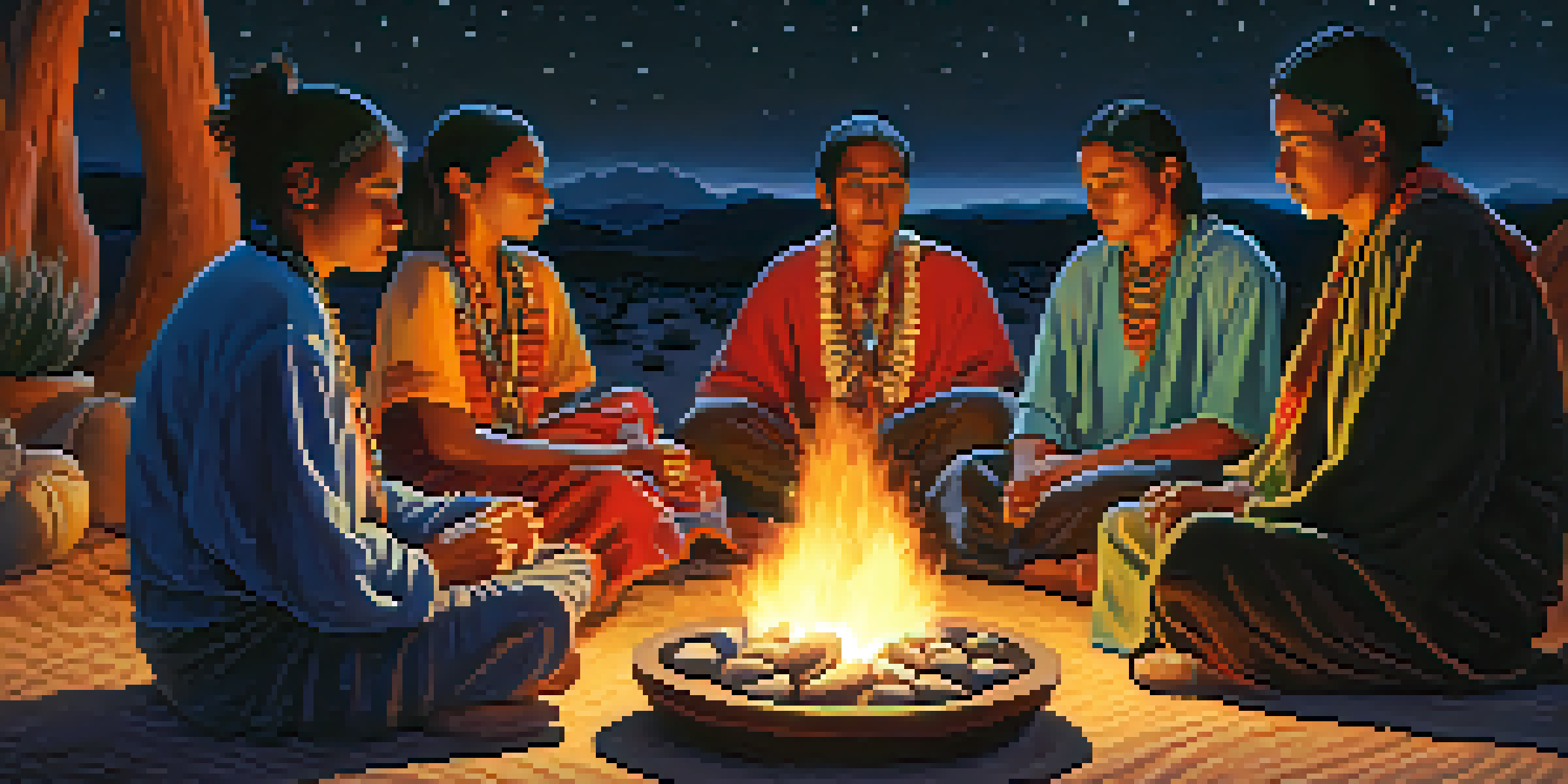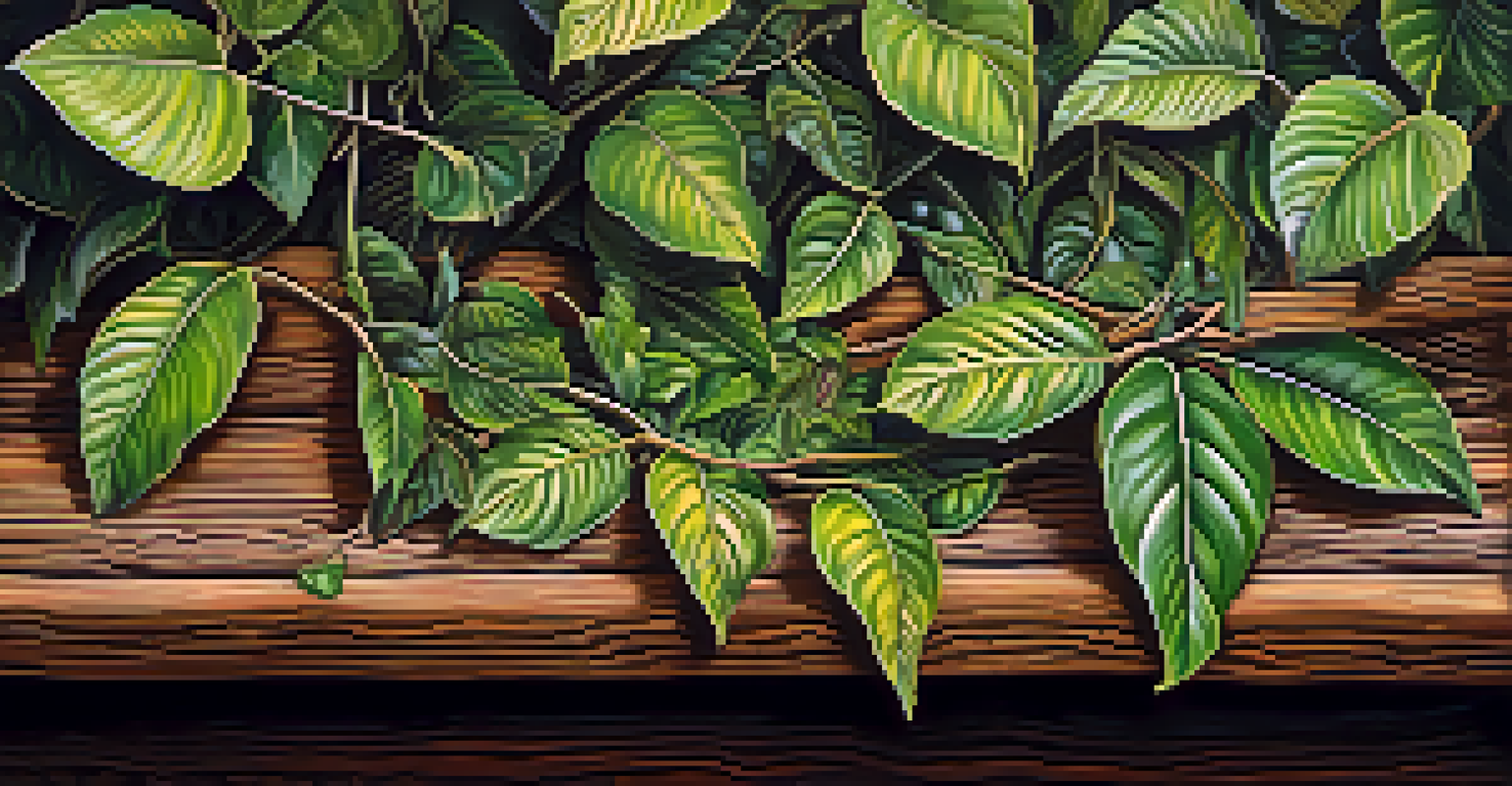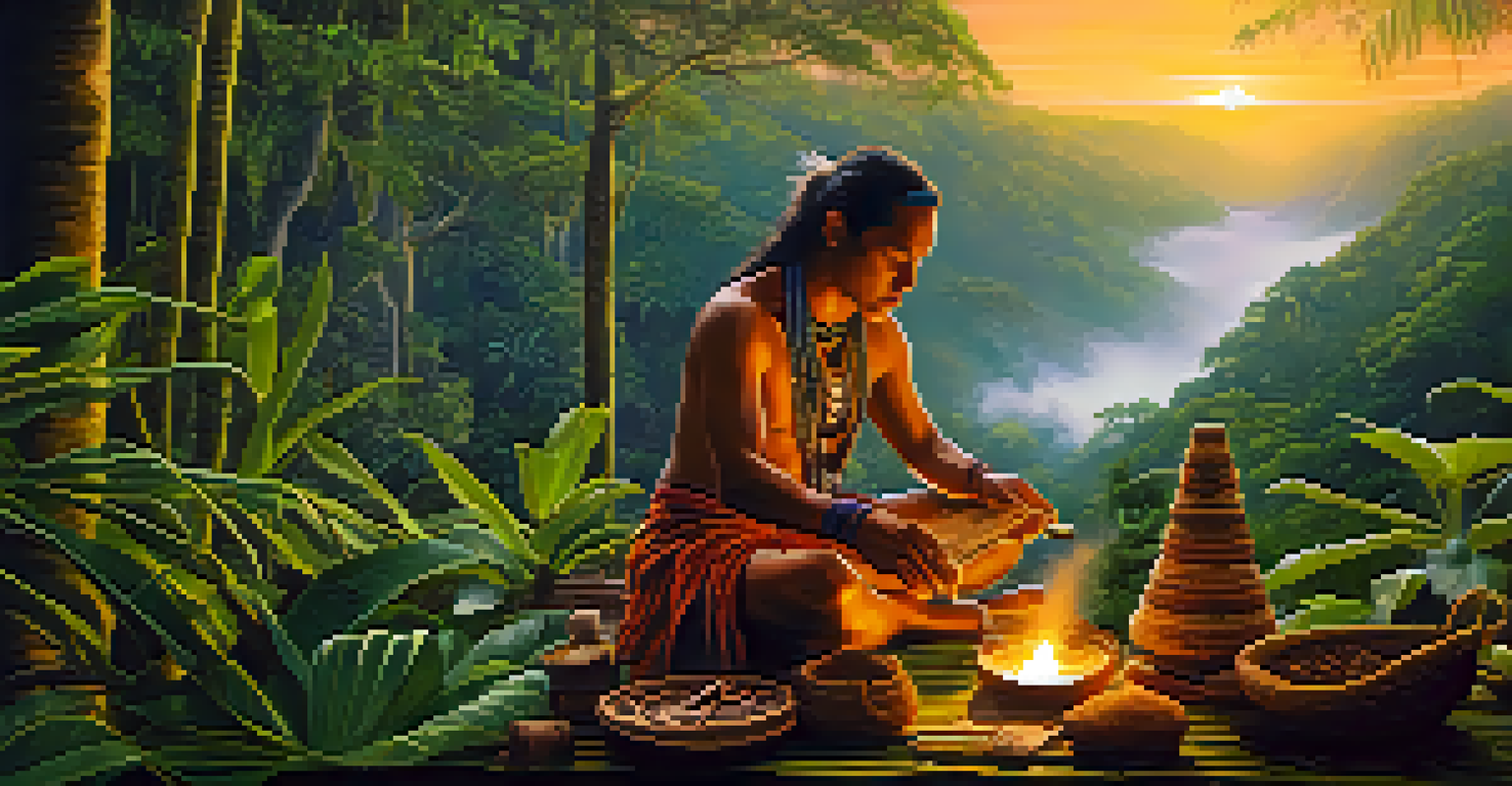Entheogens in the Amazon: Indigenous Uses and Beliefs

Understanding Entheogens: Nature's Sacred Medicines
Entheogens are substances that inspire spiritual experiences, often derived from plants. In the Amazon, these natural compounds play a significant role in religious and healing practices. Indigenous cultures have used them for generations, believing they connect them to the divine and their ancestors.
The experience of consuming peyote can lead to vivid visions and deep emotional introspection.
Common entheogens include ayahuasca, a brew made from two plants, and peyote, a cactus known for its psychoactive properties. These substances are not just recreational; they are seen as sacred tools for introspection and personal growth. The deep-rooted traditions surrounding their use highlight a profound respect for nature and its wisdom.
For many indigenous groups, the consumption of entheogens is a communal experience, often accompanied by rituals and guidance from shamans. This collective approach fosters a sense of unity and shared understanding, reinforcing cultural bonds. The spiritual journey facilitated by these experiences can lead to healing and transformation on both individual and community levels.
The Role of Shamans in Indigenous Beliefs
Shamans are essential figures in many Amazonian communities, acting as spiritual leaders and healers. Their knowledge of entheogens and their effects allows them to guide individuals through profound experiences. This journey often involves navigating complex emotional landscapes, making the shaman's role vital for safety and understanding.

During ceremonies, shamans prepare and administer entheogens, creating a sacred space for participants. They use chants, music, and rituals to enhance the experience, helping individuals connect with the spiritual realm. This careful orchestration not only facilitates personal insights but also reinforces the cultural significance of the practice.
Entheogens as Spiritual Tools
Entheogens like ayahuasca and peyote are revered in indigenous cultures for their role in spiritual growth and healing.
Moreover, shamans play an important role in preserving traditional knowledge, passing down practices and beliefs through generations. Their deep connection to the land and its resources is critical for the community's survival and identity. This intergenerational transfer of wisdom ensures that the sacred practices surrounding entheogens remain vibrant and relevant.
Cultural Significance of Entheogens in Rituals
Rituals involving entheogens are often deeply embedded in the cultural fabric of Amazonian tribes. These ceremonies serve multiple purposes, including healing, divination, and community bonding. By engaging with entheogens, participants often seek answers to life's profound questions or clarity regarding personal challenges.
Engaging with ayahuasca should be done thoughtfully, ideally in a traditional setting under the guidance of experienced shamans.
The significance of these rituals extends beyond the individual; they reinforce social cohesion and shared identity within the tribe. When people gather for a ceremony, it strengthens their collective bond and affirms their cultural heritage. This communal aspect is crucial, as it fosters a sense of belonging and purpose.
Additionally, the rituals often emphasize respect for nature and the interconnectedness of all living beings. This worldview is integral to many Amazonian cultures, reflecting a profound understanding of ecological balance. By participating in these ceremonies, individuals reaffirm their commitment to protecting the environment and nurturing their spiritual connection to the land.
Ayahuasca: The Vine of the Soul
Ayahuasca, often referred to as the 'vine of the soul', is one of the most well-known entheogens used in the Amazon. This powerful brew is made from the Banisteriopsis caapi vine and the Psychotria viridis leaf, both of which are native to the region. The combination creates a potent psychoactive experience that many describe as life-changing.
For indigenous tribes, ayahuasca ceremonies often serve as a pathway to healing physical and emotional ailments. Participants report profound insights and clarity, leading to personal transformation. This transformative potential is one reason why ayahuasca has gained popularity beyond indigenous communities, drawing interest from people worldwide seeking spiritual experiences.
Shamans Guide Transformative Journeys
Shamans play a crucial role in facilitating safe, meaningful experiences with entheogens, ensuring participants navigate their spiritual journeys effectively.
However, it's essential to approach ayahuasca with respect for its cultural origins. Misunderstanding or misusing this sacred substance can lead to negative outcomes, both personally and for the communities that hold it dear. Engaging with ayahuasca should be done thoughtfully, ideally in a traditional setting under the guidance of experienced shamans.
Psychoactive Cacti: The Role of Peyote
Peyote, a small cactus containing the psychoactive compound mescaline, has been used by indigenous peoples for centuries, particularly in northern Mexico and the southwestern United States. While not as prevalent in the Amazon, its significance in indigenous spiritual practices cannot be overlooked. Peyote ceremonies often focus on healing and gaining insight into one's life path.
The experience of consuming peyote can lead to vivid visions and deep emotional introspection. For many, these journeys are transformative, providing clarity and a sense of purpose. The communal aspect of peyote ceremonies, similar to those involving ayahuasca, reinforces social ties and shared beliefs within the group.
Despite its cultural importance, peyote faces challenges due to overharvesting and habitat loss. Many indigenous communities are actively working to protect their sacred plants and ensure their continued availability for future generations. This highlights the broader issue of environmental conservation and the need to respect indigenous knowledge and practices.
Modern Interest and Globalization of Entheogens
In recent years, there has been a surge of interest in entheogens, particularly among individuals seeking alternative forms of therapy and spiritual exploration. This modern fascination has led to a growing number of retreats and workshops that focus on ayahuasca and other entheogenic experiences. While this can promote awareness, it also raises concerns about cultural appropriation and exploitation.
As western interest in entheogens grows, the question of how to honor indigenous practices becomes paramount. Many tribes are concerned about outsiders commodifying their sacred traditions without understanding their significance. This tension highlights the importance of approaching these practices with respect and a commitment to ethical engagement.
Challenges for Indigenous Practices
Indigenous practices surrounding entheogens face threats from globalization, environmental degradation, and legal challenges that jeopardize their cultural heritage.
Moreover, the dialogue surrounding entheogens is evolving, with scientific research exploring their potential therapeutic benefits. Studies suggest that entheogens may aid in treating mental health issues like depression and PTSD. This intersection of traditional knowledge and modern science opens new avenues for understanding the role of entheogens in both healing and spiritual growth.
Challenges Facing Indigenous Practices Today
Indigenous practices surrounding entheogens face significant challenges in today's world. Rapid globalization and environmental degradation threaten the very ecosystems that provide these sacred plants. As deforestation and climate change continue to impact the Amazon, the survival of traditional knowledge hangs in the balance.
Additionally, the commercialization of entheogens poses ethical dilemmas for indigenous communities. As more outsiders seek these experiences, the risk of exploitation and misrepresentation grows. Many tribes are working to reclaim their narratives and ensure that their practices are respected and preserved.

Legal challenges also play a role, as laws surrounding entheogens vary widely across countries. This inconsistency can hinder indigenous peoples' rights to practice their traditions. Advocating for the recognition and protection of these practices is crucial to ensuring that future generations can continue to engage with their cultural heritage.